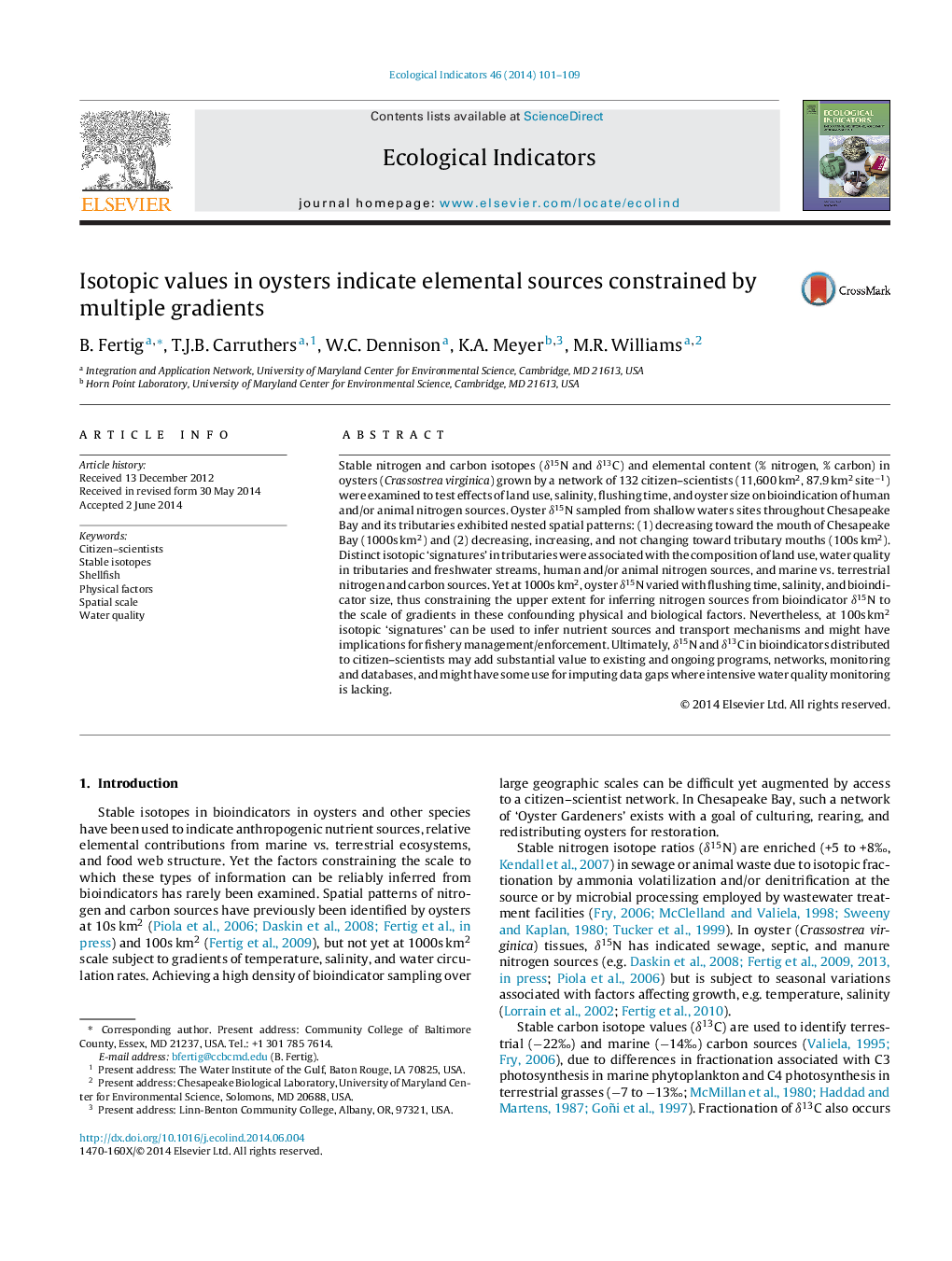| کد مقاله | کد نشریه | سال انتشار | مقاله انگلیسی | نسخه تمام متن |
|---|---|---|---|---|
| 6294837 | 1617155 | 2014 | 9 صفحه PDF | دانلود رایگان |
- 132 citizen-scientists grew oysters across 11,600 km2 for δ15N and δ13C analysis.
- δ15N varied by flushing, salinity, bioindicator size, water quality, and land use.
- Nested spatial patterns constrained bioindication to scale of confounding factors.
- At 100s km2, isotopic signatures can reveal elemental sources and transport.
- Distributing bioindicators to citizen-scientists adds value to existing datasets.
Stable nitrogen and carbon isotopes (δ15N and δ13C) and elemental content (% nitrogen, % carbon) in oysters (Crassostrea virginica) grown by a network of 132 citizen-scientists (11,600 km2, 87.9 km2 siteâ1) were examined to test effects of land use, salinity, flushing time, and oyster size on bioindication of human and/or animal nitrogen sources. Oyster δ15N sampled from shallow waters sites throughout Chesapeake Bay and its tributaries exhibited nested spatial patterns: (1) decreasing toward the mouth of Chesapeake Bay (1000s km2) and (2) decreasing, increasing, and not changing toward tributary mouths (100s km2). Distinct isotopic 'signatures' in tributaries were associated with the composition of land use, water quality in tributaries and freshwater streams, human and/or animal nitrogen sources, and marine vs. terrestrial nitrogen and carbon sources. Yet at 1000s km2, oyster δ15N varied with flushing time, salinity, and bioindicator size, thus constraining the upper extent for inferring nitrogen sources from bioindicator δ15N to the scale of gradients in these confounding physical and biological factors. Nevertheless, at 100s km2 isotopic 'signatures' can be used to infer nutrient sources and transport mechanisms and might have implications for fishery management/enforcement. Ultimately, δ15N and δ13C in bioindicators distributed to citizen-scientists may add substantial value to existing and ongoing programs, networks, monitoring and databases, and might have some use for imputing data gaps where intensive water quality monitoring is lacking.
Journal: Ecological Indicators - Volume 46, November 2014, Pages 101-109
